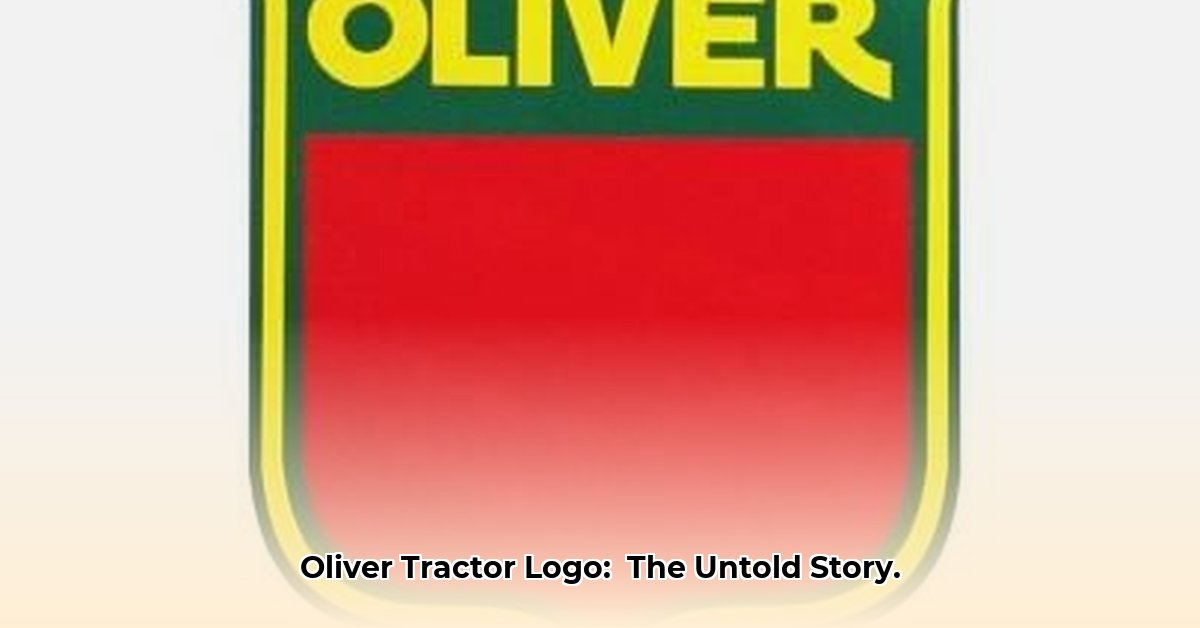
Oliver Tractor Logo: A Visual Journey Through Time
The Oliver tractor logo transcends mere branding; it's a visual chronicle of innovation, mergers, and the transformative landscape of American agriculture. This journey traces its evolution from the early 20th century to its final iteration in the late 1980s, exploring the design changes and their underlying business contexts. Understanding this evolution reveals valuable insights into the power of visual identity and its role in navigating the complexities of corporate history. For more on Oliver's history, see this great resource on Oliver pedal tractors.
The Hart-Parr Wings: Embarking on a New Era (1901)
Our narrative begins in 1901 with the Hart-Parr Company, a pioneer in tractor technology. Their logo—a striking winged radiator emblem—symbolized a bold leap into a mechanized future. The soaring wings powerfully conveyed both speed and the revolutionary potential of their machines, resonating with farmers eager for increased efficiency. This early design emphasized innovation and a forward-looking vision, a significant branding choice for a nascent industry. Did this bold visual strategy effectively communicate the groundbreaking nature of Hart-Parr tractors to a largely agrarian audience?
The Oliver Shield: A Symbol of Strength and Stability (1929)
The 1929 merger forming the Oliver Farm Equipment Company necessitated a new visual identity. The result was the iconic Oliver shield, a keystone-shaped symbol representing dependability and resilience—critical attributes for a company supplying heavy machinery to farmers. The shield's inherent strength and protective qualities likely played a key role in reassuring customers about the durability and reliability of their tractors. The simple yet powerful design emphasized stability at a time of significant economic uncertainty, creating a brand image that resonated amidst the Great Depression. How did the adoption of the shield logo impact Oliver Farm Equipment's market share and brand recognition immediately following the merger?
Evolution of an Icon: A Decade-by-Decade Analysis
The Oliver shield wasn't static; it evolved subtly over time, reflecting both changing design aesthetics and the company's strategic shifts.
| Period | Logo Description | Significance |
|---|---|---|
| 1901-1929 | Hart-Parr winged radiator – a soaring symbol of innovation | Represents the company's pioneering spirit and early technological breakthroughs in the nascent tractor industry. |
| 1929-1950s | Oliver shield (early iterations) – simple, sturdy design | Marked the consolidation and growth of Oliver Farm Equipment, aiming for a unified brand identity. |
| 1950s-1970s | Oliver shield (refined iterations) – subtle design updates | These may have reflected evolving design trends, internal branding strategies, or feedback from the market. |
| 1970s-1980s | Transition to White Farm Equipment (WFE) logo | Symbolized the acquisition by White Motor Corporation and the subsequent rebranding of a significant industry player. |
The subtle refinements of the Oliver shield during the mid-20th century likely aimed to maintain brand recognition while adapting to prevailing design sensibilities. How did these subtle changes affect consumer perception and brand loyalty within the competitive agricultural machinery market?
The transition to the White Farm Equipment (WFE) logo signaled the end of an era. This wasn't merely a visual alteration, but a reflection of larger corporate restructuring and a shift in industry dynamics. The gradual fading of the Oliver name highlights the complexities of corporate mergers and acquisitions, reminding us that even established brands can be absorbed into larger entities, leading to significant changes in their visual presentation.
How Did Oliver Farm Equipment Logo Changes Reflect Company Mergers and Acquisitions?
The Oliver tractor logo offers a compelling case study of how a visual identity can reflect a company’s evolution through mergers and acquisitions. Its transformation mirrors the company's journey, providing insights into branding strategies during periods of significant change.
From Plow to Power: Early Branding (Pre-1929)
The Oliver Chilled Plow Works likely lacked a formal logo in its early years. Branding likely focused on the company name and the proven quality of its plows. The shift towards tractor production created the need for a more distinct visual identity to match its increasingly ambitious technological focus. What factors influenced the design choices for the early iterations of Oliver logos?
Consolidation and a Unified Brand (1929-1960)
The 1929 merger created the Oliver Farm Equipment Company, necessitating a new logo to unify diverse entities under a single, powerful brand. This new visual identity needed to reflect the increased scale and ambition of the merged company. To what extent did the newly adopted logo shape the company's overall marketing strategy in the years following the merger?
The White Motor Era: A Gradual Shift (1960-1985)
The White Motor Company's acquisition of Oliver resulted in a gradual transition in the logo. This phased approach aimed to balance brand recognition with the integration into the White corporate identity. How effectively did White Motor Corporation balance preserving the equity of the Oliver brand with introducing its own corporate identity? The eventual phasing out of the Oliver logo reflects the shift in control and the subsequent rebranding under White Farm Equipment.
The Enduring Legacy
Despite its absence from the commercial market, the Oliver tractor logo maintains a significant legacy and cultural resonance. Collectors and enthusiasts actively seek out vintage Oliver tractors and memorabilia, and museums frequently showcase this iconic imagery. These artifacts offer tangible connections to a bygone era of farming, innovation, and the compelling narrative of one powerful brand's journey. What factors contribute to the enduring appeal and collectability of Oliver tractor logos and related memorabilia?
Key Takeaways:
- The Oliver logo's evolution directly mirrors the company's growth through mergers.
- Early logos emphasized functionality and reliability.
- The 1929 merger prompted a more modern, unifying symbol.
- The White Motor acquisition led to a gradual logo transition.
- The Oliver logo's history holds invaluable lessons in corporate branding.